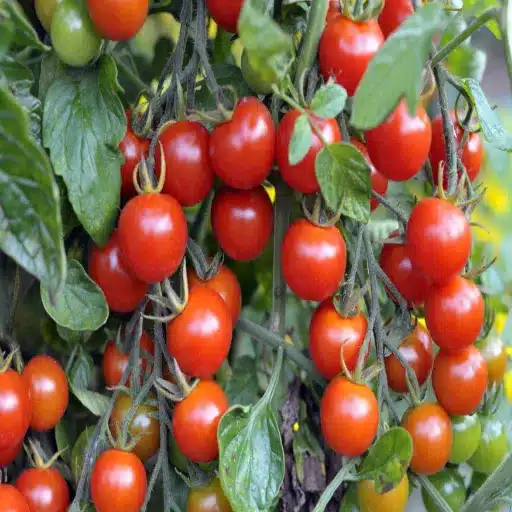Growing tomatoes is challenging because they require specific growing practices, which gardeners must master to increase their growth and fruiting. One way that has been recommended in agriculture for this purpose is using Epsom salt, a combination of magnesium sulfate. This article will look into details on why Epsom salt may become your useful gardening support. The beneficial aspects of tomato plants regarding nutrition, the scientific set-up that makes it deliver, as well as ways on how best one can assimilate it into his or her farming practice will be examined within this piece. By the end of this manual, you have what it takes to expect better results when cultivating tomatoes and increase your harvest yields considerably.
Understanding the Role of Epsom Salt in Tomato Growth
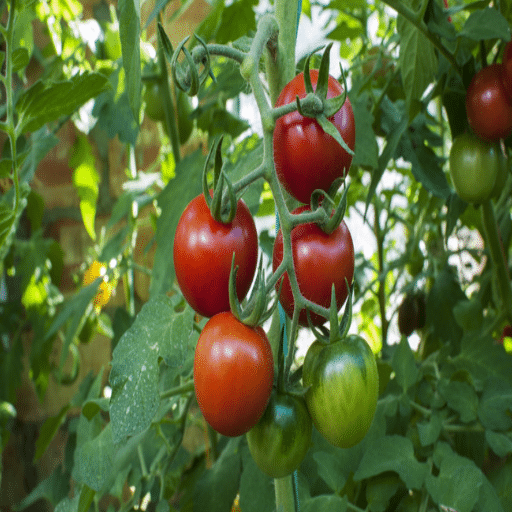
Primarily, tomato plants require Epsom salt for their growth due to its large quantities of magnesium which is crucial in various physiological processes. This element forms an integral part of chlorophyll; the pigment responsible for photosynthesis thus a plant can well utilize natural light to produce energy. Besides, it also facilitates nitrogen and phosphorus absorption into the plants, which are vital nutrients boosting robustness and the fruiting process. A decent supply of magnesium enhances fruit quality and accelerates maturity rates, leading to increased productivity levels. Moreover, Epsom Salt improves nutrient uptake in soils, thereby enhancing root development and making tomato cultivation more successful.
What is Epsom Salt?
Epsom salt is chemically known as magnesium sulfate (MgSO₄); a naturally occurring mineral compound consisting of oxygen, sulfur and magnesium. It normally comes in the form of white crystals that readily dissolve in water. Technical Specifications on Epsom Salt include:
- Chemical Formula: MgSO₄·7H₂O (The heptahydrate form commonly used for gardening).
- Molecular Weight: The overall weight is approximately 246.47 g/mol including all the hydration water.
- Solubility: Solubility in water: It has a high solubility with about 35.7 grams dissolving per 100ml at 20°C making it good for plant nutrient absorption when dissolved before use.
- pH Level: When dissolved in water, its pH ranges between 6 and 7; hence, it will not alter soil pH significantly, even though it can be used on many other soil types.
Thus, Epsom salt provides magnesium, which promotes the synthesis of chlorophyll, while sulfate helps increase nutrient absorption and the overall health status of plants. Hence, this product is important in optimizing tomato plantation growth and yield through horticultural practices.
The Nutritional Needs of Tomato Plants
Tomato plants require specific nutrients for successful growth and development of fruits. Major macronutrients include nitrogen (N), phosphorous (P) and potassium (K) as they are essential in the plant growth processes; nitrogen enhances vegetative growth, phosphorous supports root establishment and blooming while potassium improves fruit quality besides rendering resistance to diseases. Calcium, magnesium, and sulfur are secondary elements with significant importance; calcium helps form cell walls, magnesium is required for photosynthesis, and sulfur takes part in protein formation. In addition, there are trace elements such as iron, manganese, zinc, and boron, which play hormonal roles but only need minute quantities in order to facilitate some biochemical reactions. Hence, maintaining a balanced nutrient profile in soil through regular tests coupled with appropriate adjustments can lead to higher yields, better fruit set and improved growth rates of tomatoes.
Why Magnesium and Sulfur Matter for Tomatoes
Magnesium and sulfur are essential minerals that contribute significantly to tomato plants’ physiological well-being. It is an integral component of chlorophyll necessary for photosynthesis, where plants convert light energy into chemical form. Lack of sufficient magnesium leads to symptoms like interveinal chlorosis, poor crop growth, or lower fruit set, among others, in tomato plants. For optimum growth, soil levels of magnesium should be around 20-50 ppm.
Conversely, sulfur is necessary for amino acid synthesis, including protein synthesis, as well as important plant hormones. It participates in various metabolic processes within the plant system and helps produce volatile compounds responsible for flavoring tomatoes. For proper plant development purposes, sulphur levels should range between 10 and 20 ppm.
These nutrients are essential in facilitating the growth of healthy tomatoes and improving their nutritional value; therefore, magnesium and sulfur cannot be ignored. A routine soil test and application of Epsom salt or other sources of sulphur can help maintain these nutrient levels, thus ensuring strong plants and increased yields.
When and How Often to Apply Epsom Salt
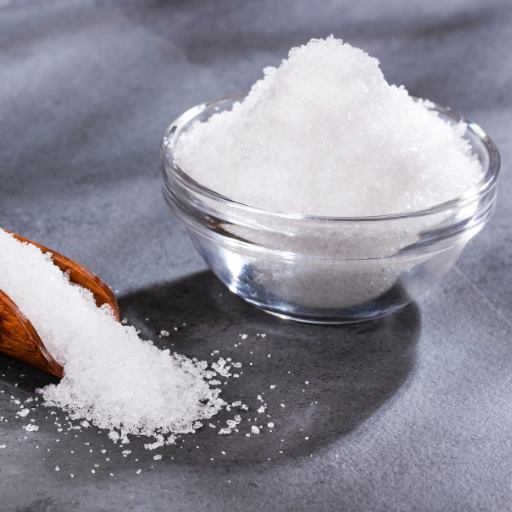
Epsom salt, which contains magnesium sulfate, should be applied to tomato plants at important growth stages in order to maximize benefits. It is generally suggested that Epsom salts be mixed with a tablespoonful for every mound at planting time. The first application will also enable the soil to reach an adequate level of magnesium. A second application can be made when the plants start bearing flowers and again when fruits are forming around every 4-6 weeks during the growing season. In order to have good nutrient uptake and even spread, it is crucial to dissolve Epson salt in water at about one tablespoon per gallon of water before applying as foliar spray or soil drench. Regular monitoring of plant health and soil nutrient levels will guide adjustments to the application frequency and quantity as required.
Best Times of Year for Epsom Salt Application
The best times for applying Epsom salt on tomatoes are generally during different phases of growth throughout the growing period. To ensure optimum root development, it is prudent to use Epsom salt at planting time so as to establish vital magnesium levels in the soil. Consequently, another dose should be given when these plants initiate flowering fostering blossom formation and fruit set. Moreover, another dosage may assist during fruit maturation as it usually occurs in mid-late summer thereby supporting overall quality as well as yield of fruits produced by these plants. However, timing may vary slightly depending on regional climatic conditions and specific planting dates; hence, local cropping patterns might provide further indications of the precise timing of applications.
Signs Your Tomato Plants Need Epsom Salt
- Chlorosis: this means that its leaves look yellowish, especially old ones, a condition which suggests a lack of enough magnesium ion. Magnesium deficiency hampers chlorophyll production leading to lower green coloration and hence retarded plant growth.
- Poor Fruit Development: Stunted or underdeveloped fruit might mean your tomato plants need more magnesium. Magnesium is vital in ensuring optimal fruit development through photosynthesis and energy transfer.
- Brittle Leaves: If you notice that the leaves are not strong enough to break apart, your plants may lack magnesium. This occurs due to disruption in the cell structure, which eventually weakens the entire plant system.
- Leaf Curling: Nutritional stress is typically characterized by curling of leaf margins upwards. In cases of low magnesium levels, this symptom can be seen more easily because it affects nutrient transport in plants.
- Delayed Flowering: Also a noticeable delay in flowering may indicate lack of enough magnesium ion. Magnesium makes enzymes responsible for flower and fruit formation hence its deficiency can significantly impede successful reproduction.
Frequency of Application: How Much is Too Much?
To avoid harmful effect, it is important to undergo the appropriate frequency when applying Epsom salt on tomato plants. Typically, a standard recommendation suggests the use of Epsom salt every four to six weeks throughout the growing season. This can cause overuse of magnesium, which may hamper nutrient balance, leading to undesirable plant health consequences. A standard dose will be about 1 tablespoon per foot tall of the plant in water so that it spreads out equally among all parts of the plant. They are symptoms and signs that should you be watching out for before going ahead with an excessive application because they might instead make things worse than better. Further insights can be obtained by conducting soil tests to customize applications based on specific nutrient needs without flooding soil with magnesium.
Methods of Applying Epsom Salt to Tomato Plants
- Soil Application: So, one of the effective ways is to mix Epsom salt into the soil directly before planting or during the growing season itself. The solution for this is that 1 tablespoon of Epsom salt should be mixed into the base of each tomato plant well blended with it. With this method, magnesium becomes available in a form that can be easily absorbed at the root level and, therefore, enhances growth.
- Foliar Spray: Foliar application works best for rapid absorption by plants. To make a spray for tomatoes, dissolve 1 tbsp of Epsom salt in a gallon of water and spray it directly on the leaves. Where an insufficiency of nutrients has been suspected, such an approach would work well as it facilitates instant uptake through the leaf surface.
- Dissolving in Water: Alternatively, you could simply dissolve Epsom salt in water for irrigation. Another way to use this is to dissolve one tablespoon with one quart of water and use it on your plants whenever they are being watered normally. This allows both magnesium and sulfate to be absorbed directly into a plant, promoting its overall healthiness and productivity.
Soil Drenching: A Step-by-Step Guide
- Preparation of the Solution: Start by making a mixture of Epsom salts and water. It is generally recommended that you add 1-2 tablespoons of Epsom salts per gallon of water so that there will be enough magnesium sulfate present to reach the root system.
- Timing: Apply your soil drench either early morning or late afternoon when temperatures are cooler. This helps reduce evaporation, hence better root absorption.
- Application Method: Ensure that your solution penetrates through the soil to reach the root zone by pouring it evenly around them without over-saturating the area, which can lead to a condition called water-logging that destroys root health.
- Frequency of Application: During the growing season, it is advisable to undertake soil drenching every four to six weeks while observing plants for signs of nutrient deficiencies and adjusting the frequency accordingly.
- Post-Application Care: The soil should remain wet after application without becoming waterlogged. This equilibrium helps increase magnesium availability and encourages healthy root growth.
Foliar Spray: Instructions and Benefits
Foliar spray is an effective method of getting essential nutrients into plant leaves, thereby promoting their general fitness and well-being. To prepare a foliar spray from Epsom salt, mix one or two tablespoons of Epsom salt with a gallon of water, similar to the solution used for soil drenching.
Instructions for Application:
- Preparation of the Spray: Start by dissolving Epsom salt in water in a spray bottle or garden sprayer. Ensure that you mix up this solution evenly before applying it.
- Timing: Apply this spray early in the morning or late in the afternoon when temperature conditions are cool as this minimizes chances of leaf burn due to lower humidity levels.
- Application Method: Directly spraying on leaves with focus on those undersides where stomata are situated promotes optimum absorption. Coat surfaces evenly without excessive dripping since they may cause harm to plants that receive too much moisture as well as inhibit efficient diffusion at such points
- Frequency of Application: In the growing season, if plants show signs of magnesium deficiency such as yellowing between leaf veins, foliar spraying can be done every four to six weeks.
Benefits:
Foliar spraying with Epsom salt is advantageous. It promotes rapid nutrient absorption through the leaves, which is useful in situations where plants exhibit nutritional deficiencies. It tends to up chlorophyll production, which increases photosynthesis and leads to stronger and healthier plant growth. Also, it prevents any risk of nutrient leaching that comes with soil applications, so necessary elements are available at that crucial time.
Direct Soil Application Techniques
Direct soil application techniques for Epsom salt involve integrating it directly into the soil to ensure that plants receive a steady supply of magnesium and sulfur.
- Granular Application: At a rate of 1-2 tablespoons per each plant at the base, one can apply Epsom salt in its granular form by broadcasting it there. The method allows slow uptake as water penetrates into the soil, reducing runoff losses.
- Dissolved Solution: Another effective method is dissolving Epsom salt before applying it to crops. A commonly used ratio is 1 tablespoonful per gallon of water for Epsom salt solution. This solution should be poured right around the plant’s root zone to allow nutrients absorption to kick off immediately.
- Soil Drenching: For more intensive treatment options, soil drenching may be preferred. This technique involves saturating the soil with a solution containing Epsom salt at about 1-2 tablespoons per gallon of water depending on concentration prepared inside this mixture or compound, then applied within nearby root zones over an extended period such as days or weeks until complete saturation occurs throughout targeted areas including those near root tips so they can soak up enough important minerals like magnesium when required most.
Applying Epsom salt directly to the soil can increase nutrient availability and improve overall plant health, especially in soils that are deficient in magnesium. Continuous applications throughout the growing season would be useful for maintaining plant vigor and yield.
Common Mistakes to Avoid When Using Epsom Salt
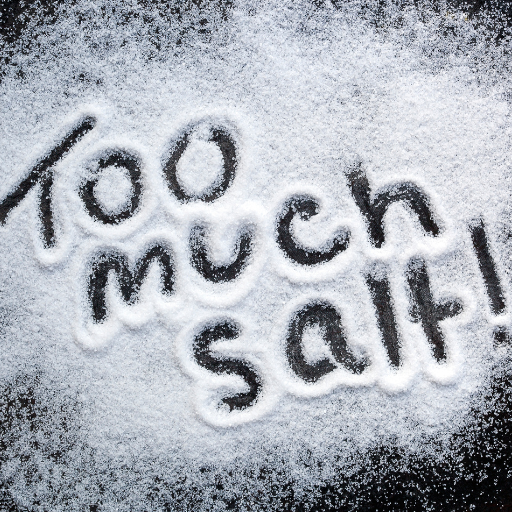
- Overuse: Too much Epsom salt can cause an imbalance of nutrients and increase the salinity of the soil, which may adversely affect plants. It is important to stick to recommended rates of application so as not to overdo it.
- Neglecting Soil Testing: Failure to carry out soil testing before applying Epsom salts can lead to unnecessary usage especially on soils that are already rich in magnesium or sulfur. It is essential for one to understand the nutrient composition of the soil before deciding on how much should be added.
- Inconsistent Use: In some cases, gardeners use Epsom salt only sometimes during growth periods but not consistently throughout all seasons. Thus, regular application, based on plant growth stages will ensure consistent availability of nutrients and optimal plant performance.
Over-Application Risks and How to Avoid Them
Risks arising from the excessive use of Epsom salt include negative impacts on both soil and plants. When a surplus amount of magnesium sulfate is introduced, it could unbalance the chemistry of the soil and possibly result in nutrient lockout, whereby critical nutrients become inaccessible to plants. Moreover, high amounts of Epsom salt can raise salinity in the ground, thereby inhibiting root development and reducing water absorption, ultimately leading to plants under stress.
To mitigate these risks, carry out a full-scale examination prior its use by conducting comprehensive soil test(s). This will reveal existing nutrient levels and help determine whether additional magnesium or sulfur is necessary. If you go ahead with using it at all, make sure you follow recommendations closely (usually no more than a few tablespoons per gallon) while also looking for any signs from your crops as response to that input. Also, continual assessment made towards plant health status plus prevailing conditions within the field as growing progresses provides an opportunity for timely adjustment if any indications of over-fertilization exist in a bid to maintain favorable nutrient management practices.
Misidentifying Plant Deficiencies
Misdiagnosing the nutrient problem can worsen it rather than alleviating it. The common mistake is that yellow leaves are only indicative of nitrogen deficiency while they may also be displaying other signs such as magnesium deficiencies, iron or over-watering.
- Magnesium Deficiency: The symptom consists of chlorosis between veins in the leaves, where the veins remain green and the surrounding tissue turns yellow. It occurs on soils with a high pH that does not allow for the uptake of magnesium. Soil should contain critical levels of magnesium ranging from 50-100 ppm for optimum growth.
- Iron Deficiency: This deficiency causes chlorosis on young leaves with dark green veins and yellow leaf tissue. It usually happens in alkaline soils with ph above 7 where iron becomes less soluble. Recommended soil iron content ranges from around 2 to 4 ppm.
- Nitrogen Deficiency: Yellow lower leaves accompanied by retardation in growth indicate lack of adequate nitrogen supply most times than not. Ideally, a good soil test should show that Nitrogen levels are kept at anything above 20ppm for full plant healthiness.
It is important to take into consideration specific symptoms against corresponding soil conditions so as to make an accurate diagnosis. Conducting a soil test will help understand soil nutrient levels and thus design more focused interventions based on particular deficiencies identified. Thus, making adjustments according to these findings enhances resilience in plants, leading to optimized growth outcomes.
Mixing Epsom Salt with Other Fertilizers: A Few Things to Know
Mixing Epsom salt (magnesium sulfate) with other fertilizers can amplify the availability and consumption of nutrients by plants. By mixing it with nitrogen-rich fertilizers, Epsom salt stops magnesium deficiencies that promote chlorophyll production for a healthier plant. However, care should be taken when using potassium-based fertilizers since excessive amounts of magnesium may interfere with potassium absorption. A soil test is recommended before mixing to ensure optimum plant health through balancing magnesium levels and other nutrient amounts. Besides, applying epsom salt as a foliar spray can directly deliver Magnesium to the leaves for fast absorption and minimize potential competition for nutrients in the soil. Always follow manufacturer recommendations on application rates to prevent toxic buildup and ensure nutrient synergy benefits.
The Effects of Epsom Salt on Tomato Plant Health
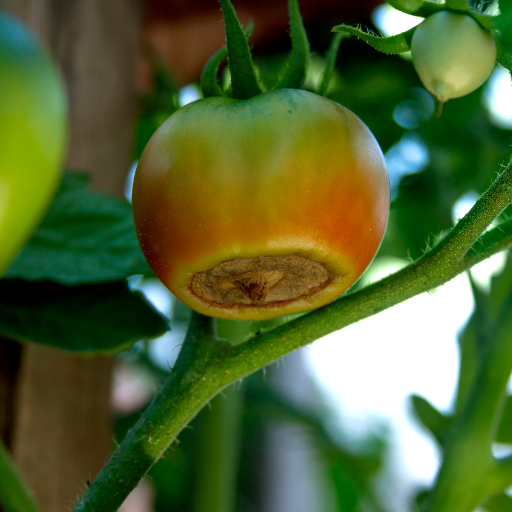
Epsom salt is a mixture of magnesium and sulfur that improves the absorption of nutrients into tomato plants promoting their overall well-being. Providing more chlorophyll production, magnesium in it promotes photosynthesis, leading to vigorous growth and fruiting. It has also been established that tomatoes grown in soils with adequate levels of magnesium exhibit higher fruit quality, resulting in plumper and tastier fruits. Besides, Epsom salt may be useful against blossom end rot – a calcium deficiency disorder in tomatoes – by improving calcium transport and uptake via better movement through cell walls. For best results of planting, Epsom salts should be applied at the start then periodically as needed throughout the major growth phases without overdoing this at the expense of balanced macronutrients.
Prevention Against Blossom End Rot
Ber commonly referred to as blossom end rot is prevalent among tomato farmers because it is linked to calcium shortage hastened by inconsistent watering and nutrient availability. Maintaining consistent soil moisture will help prevent such conditions since irregularity in watering affects absorption of Calcium. By putting Epsom salts into the ground, we significantly improve transport mechanisms for Calcium because it enhances strong cellular structure due to its Magnesium content, helping attract more Calcium up-take inside cells. In addition, crushed eggshells or other fertilizers that contain calcium can increase its supply further. Soil pH monitoring is essential since either extremely acidic or basic soils can influence nutrient availability. This way, you keep an optimal level of Calcium, enhancing the development of healthy fruits while inhibiting the occurrence of BER.
Flowering And Fruit Production Enhancement
Proper application of essential nutrients like phosphorus and potassium, especially on tomatoes, plays a significant part in boosting their flowering and fruit productivity, respectively. Phosphorus has been proven to be crucial for flower formation and bearing while potassium increases general plant health status, size as well as taste of fruits involved. Rather than this, incorporating bone meal or another phosphorous-containing fertilizer prior to planting will go a long way to achieving these goals. Moreover, proper nutrient intake and watering schedules result in abundant resources for healthy flowering and fruit set. Disease prevention is enhanced by allowing enough space between plants thereby facilitating air circulation that can ensure better blooms and yield.
Leaf Health And Color
The availability of nutrients directly affects leaf health and color in tomato plants, the most crucial ones being nitrogen, magnesium, and iron. Poor nitrogen supply results in chlorosis or yellowing of leaves because it hampers chlorophyll synthesis which could have caused greenness. Yellowing between the leaf veins indicates that magnesium deficiency has resulted into interveinal chlorosis since this element is vital for photosynthesis. Chlorophyll synthesis requires iron; hence, without it, one will notice young leaves turning yellow, but no change occurs at vein levels.To attain ideal leaf condition, soil amendments inclusive of fish emulsion or blood meal containing a lot of nitrogen should be done regularly together with other substances like Epsom salts (magnesium) and chelated iron, which contain magnesium and iron, respectively. Regularly checking plant foliage can help detect nutrient deficiencies before they become widespread.
Epsom Salt Myths and Misconceptions
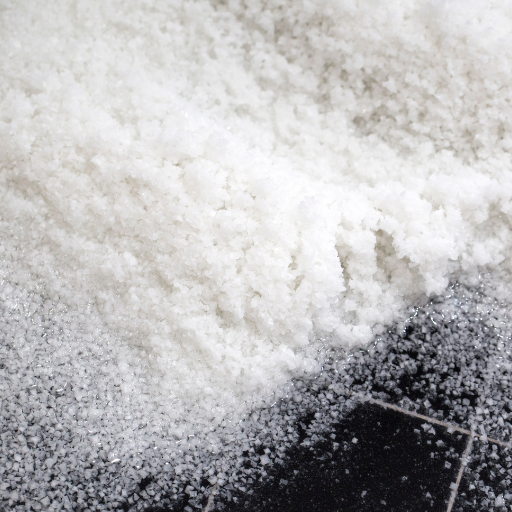
There are many misconceptions and myths about Epsom salt, scientifically called magnesium sulfate in relation to gardening that can expose people to dangerous misinformation. For instance, one common myth is that it is a panacea for plant problems; however, it merely adds magnesium and sulfur but does not substitute the use of balanced fertilizers. Similarly, some gardeners have held the opinion that if you apply Epsom salt regularly, you will be able to get more yields or even improve taste; although such claims are baseless since optimal nutrient balance is critical. Another mistake is that only specific plants benefit from Epsom salt; however, this may depend on whether some plants respond positively while others do not need any additional source of magnesium as revealed by soil testing before application. Thus, gardeners should be careful not to rely on Epsom salt alone for plant health but include it in an overall program of nutritional management according to the needs of specific plants.
Does adding Epsom Salt really enhance Tomato flavor?
The assertion that adding Epsom salt enhances tomato flavor has been subject of wide debates with no conclusive scientific proof. To some supporters, magnesium present in Epsom salts can lead to better tastes because it assists in the photosynthesis process and improves general plant wellbeing. Nevertheless, studies show that tomato flavor is mainly affected by genetic variability coupled with growing conditions plus nutrients rather than just the presence of magnesium alone. Furthermore, excessive dependence on Epsom salts without consideration for wholesome nutrient management might result in unbalanced soil nutrition thereby having negative implications upon fruit flavors. While being helpful in particular cases on tomatoes’ taste improvement, reliance solely on Epsom salts is highly discouraged; thus, a balanced fertilization strategy aligned with the needs of these plants ensures optimizes for better tasting tomatoes.
The Great Scuffle over Soil pH Change
Soil acidity or alkalinity crucially affects nutrient absorption and crop performance; nevertheless, debate surrounding whether Epsom salt can actually change soil pH remains complicated. Leading agricultural websites, however, seem to agree that Epsom salts, which contain mostly magnesium sulphate, have a neutral nature and hence do not significantly influence pH. Nonetheless, they might add on improving magnesium availability in the soil. It is important to establish the status of the PH before amending it as oversimplification can lead to fatal soil conditions; therefore, resources insist on testing soil for PH levels first. Also, it has been noted that long-term balanced soils in terms of PH necessitate holistic nutrition input, including organic matter, targeted fertilizers, and proper water management rather than relying on a single amendment. As such, while Epsom salt may be an additional source of magnesium, its impact on soil pH is limited and should be considered as part of an entire package for managing soils.
Comparing Epsom Salt to other Garden Additives
To compare Epsom salt with other garden additives one must look at what they perform or offer in plant nutrition respectively. It boosts chlorophyll formation plus nutrient uptake because it contains both sulfur and magnesium, which are essential, especially when growing crops like tomatoes (Clovers). On the contrary bone meal supplies phosphorus towards root healthiness and flowering (Osmocote). Similarly, rock phosphate is another phosphorous-rich amendment, slowly releases nutrients over time, thus building healthy soils for longer periods (Osmocote).
Additionally, rapid plant growth is enhanced, and foliage development is stimulated by blood meal, which is largely nitrogenous to complement the magnesium content of Epsom salt. However, it is important to remember that these enhancers should be used based on specific soil conditions and plant needs. The application of various additives, as well as periodic soil testing, will improve plant nutrition for better growth rates and greater yields. In short, using Epsom salt alone cannot solve a complete garden plan but must be incorporated into a range of other remedies that are unique to the kind of plants being grown.
Reference sources
- Giant Veggie Gardener
- Source: giantveggiegardener.com
- Summary: Giant Veggie Gardener advises diluting 1 tablespoon of Epsom salts with one gallon of water for a foliar spray, which allows the Epsom salts to be taken up quickly by tomato plants. This method helps in providing necessary magnesium to the plants.
- National Garden Bureau (NGB)
- Source: ngb.org
- Summary: The article from NGB suggests diluting Epsom salt at a rate of 2 tablespoons per gallon of water. It can be applied either as a drench to the roots or sprayed onto the plant foliage, aiding in the prevention of magnesium deficiency.
- GrowVeg
- Source: growveg.com
- Summary: GrowVeg recommends using a solution of about a teaspoon of Epsom salts per litre (quarter gallon) of water in a spray bottle to wet the foliage of tomato plants. This method is particularly effective for fixing yellow leaves, which are often a sign of magnesium deficiency.
Frequently Asked Questions (FAQs)
Q: Can I use Epsom salt on all types of tomato plants?
A: Yes, Epsom salt can be used on all varieties of tomato plants, including heirloom, cherry, and Roma tomatoes.
Q: How much Epsom salt should I use per tomato plant?
A: Generally, use 1 tablespoon of Epsom salt per foot of plant height, mixed with water for soil drenching or as a foliar spray.
Q: When is the best time to apply Epsom salt to my tomato plants?
A: The best times to apply Epsom salt are during planting, when the first flowers appear, and when the fruit begins to set.
Q: Can Epsom salt help prevent tomato diseases?
A: While Epsom salt is not a cure for diseases, it can help strengthen plants by providing essential nutrients, potentially making them more resilient to stress and disease.
Q: Is it possible to overuse Epsom salt on tomato plants?
A: Yes, overuse of Epsom salt can lead to an imbalance in soil nutrients and may harm the plants. Stick to recommended application rates.
Q: Can I mix Epsom salt with other fertilizers?
A: Yes, Epsom salt can be combined with other fertilizers, but it’s important to monitor your plants for signs of nutrient imbalance.
Q: Will Epsom salt improve the flavor of my tomatoes?
A: While Epsom salt is said to enhance flavor, its primary benefit is improving plant health, which can indirectly affect fruit quality.
Q: How do I know if my tomato plants need Epsom salt?
A: Look for signs of magnesium deficiency, such as yellowing between the leaf veins, to determine if your plants might benefit from Epsom salt.
Q: Can I use Epsom salt in my garden soil every year?
A: It’s generally safe to use Epsom salt annually, but it’s best to test your soil regularly to avoid nutrient imbalances.



